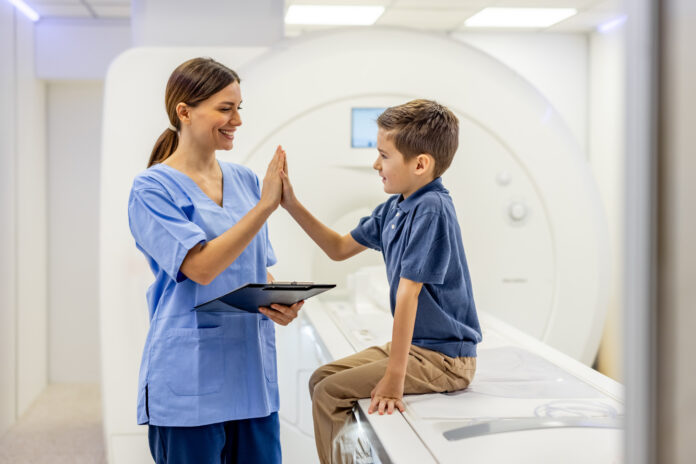
LAS VEGAS — A groundbreaking study from the Lerner Children’s Pavilion at Hospital for Special Surgery (HSS) has found that nearly 2,000 children underwent MRI scans without the need for sedation, thanks to the support of certified child life specialists (CCLS). The findings, which represent a 100% success rate for sedation-free imaging, were presented at the Pediatric Orthopaedic Society of North America (POSNA) Annual Meeting and are being hailed as a model for improving pediatric care.
MRI scans, often lasting 20 to 80 minutes, are inherently challenging for young patients due to the loud noise, confined space, and the requirement to remain completely still. Traditionally, sedation has been used in up to 28% of pediatric MRIs, a number that continues to rise. While sedation is generally safe, it carries risks such as cardiopulmonary complications and allergic reactions, and often adds stress, cost, and recovery time for both children and their families.
The HSS team found that using CCLS interventions eliminated the need for sedation entirely in a retrospective cohort of 1,936 children ages 4 to 12, who underwent 2,319 MRIs over an eight-year period. Instead of sedation, children were guided through the procedure using a variety of developmentally appropriate support strategies, including guided imagery, distraction techniques, and pre-procedure preparation.
“By avoiding anesthesia, children don’t need to fast, avoid needles, and skip the recovery period—making the entire process more efficient and less traumatic,” said Dr. Jessica H. Heyer, pediatric orthopedic and spine surgeon at HSS and lead author of the study. “It also allows us to perform MRIs even when anesthesiology resources are limited.”
The study’s findings align with recommendations from the American Academy of Pediatrics, which supports nonpharmacological approaches as standard care for infants and children undergoing MRI. At HSS, child life specialists work closely with patients and caregivers to build trust, reduce fear, and demystify the MRI experience—particularly for children with sensory sensitivities or a history of traumatic medical encounters.
Melissa Collins, MS, senior child life specialist and study co-author, emphasized the importance of age-appropriate preparation. “Children are most anxious when they don’t know what to expect. Showing them a video of the MRI process or explaining the sounds and sensations they’ll experience helps them feel more in control,” she said. “It also helps to reinforce that the MRI won’t hurt and that they’ll never be alone.”
The program also includes small but meaningful touches: children can bring a favorite soft, metal-free toy into the MRI suite, wear mirrored glasses to see their parent or technologist, and receive a reward at the end for their bravery. One or both parents are also encouraged to stay with the child during the scan.
While the 100% sedation-free success rate is remarkable, Dr. Heyer noted that certain cases—such as very young children, those requiring longer scans, or patients undergoing head or brain imaging—may still pose challenges. Nevertheless, the study suggests the greatest success was observed in children between ages 5 and 10.
As more hospitals seek to reduce reliance on sedation and improve the patient experience, HSS’s approach offers a proven and scalable model. For children, families, and care teams, this means safer imaging, reduced anxiety, and a more compassionate standard of care.

